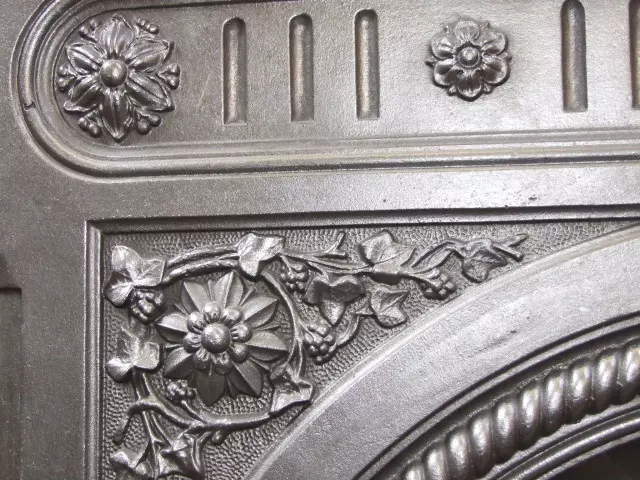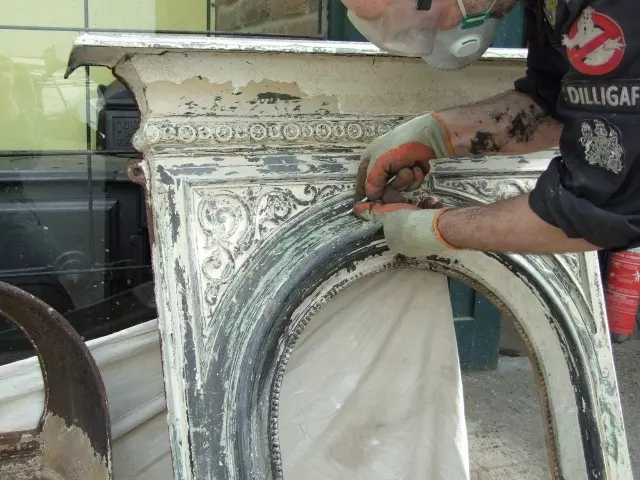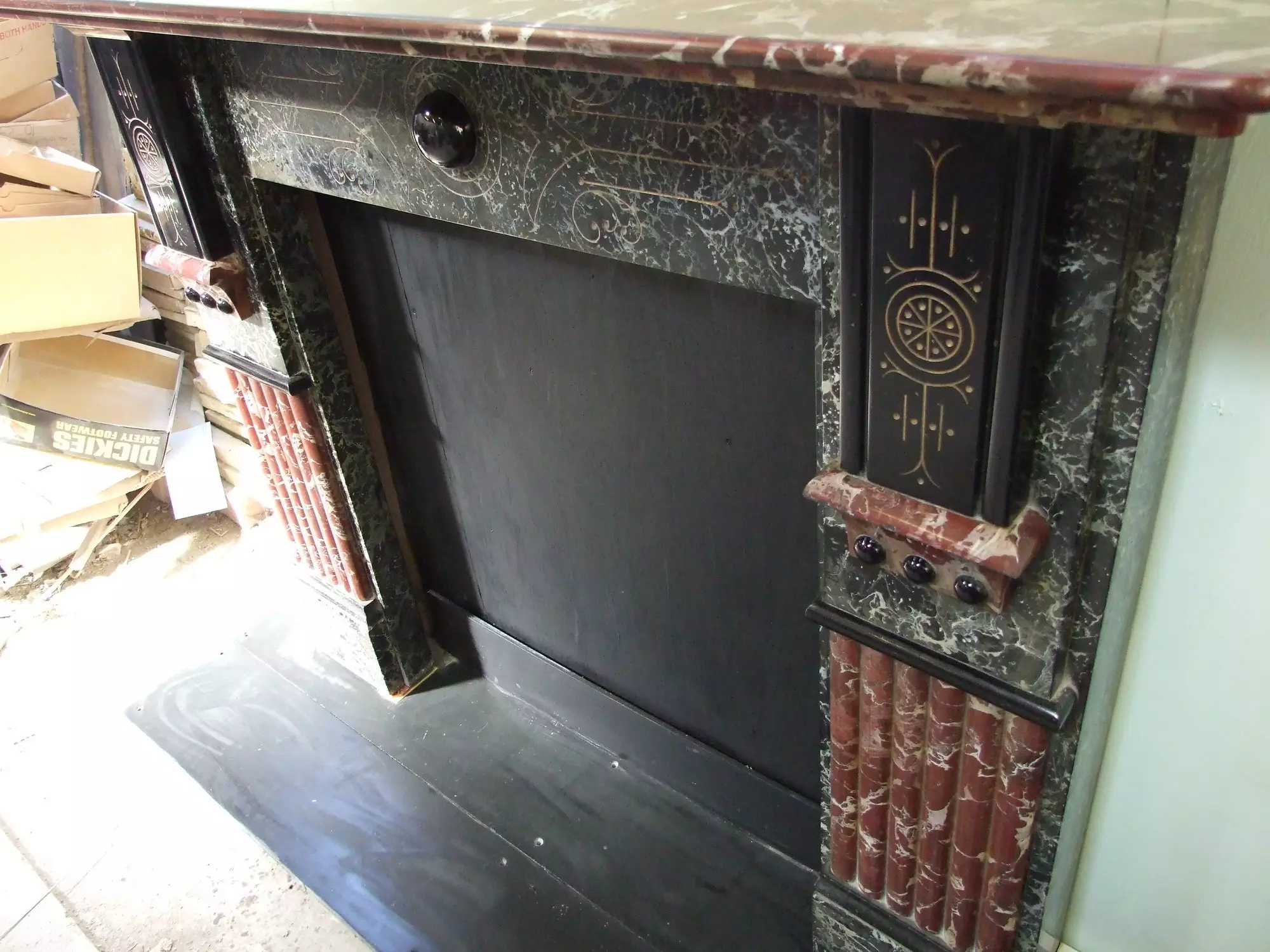If you are interested in antique fireplaces, you may want to know what is a Victorian fireplace? We look at the features that make a Victorian fireplace distinct.
Antique fireplaces, the Victorian fireplace is iconic and can easily become the centrepiece in your house. While Victorian fireplaces are synonymous with class and luxury, they typically vary from region to region and different economic, social classes and the fireplace's location within the house.
Fireplaces within less private places throughout the property such as the dining rooms or places of social gatherings are typically open fireplaces with chimneys and grates, adorning a large number of polished ornate decorations, are tiled and will act as a decoration piece, focusing on the fireplace designs first and foremost and are made to impress and often painted.
Fireplaces that surround the house or within private places throughout the house, such as the bedrooms, will typically be more simplistic cast-iron fireplace variants without paint, chimneys or tiles and often not as highly polished or taken care of.
What does a Victorian fireplace look like?
Any fireplace built under the reign of Queen Victoria (from 1837-1901) is technically classed as a Victorian fireplace. However, this gets complicated as fireplaces underwent an overhaul of aesthetical changes during the end of this period, dividing Victorian fireplaces into two different iconic styles.
Late Georgian to earlier Victorian fireplaces were ostentatious and styled in an ornate fashion that focused on intricate detailing that surrounds the mass, usually of the floral variety. Late Victorian into early Edwardian fireplaces, however, were more simple, foregoing the ostentatious.
Late Victorian fireplaces are simplistic and often geometrical in design and shape, without many detailings or intricacies and will prioritise cast-iron fireplaces over marble or other metals.
These two Victorian defining styles throughout the period range from the more stylised chimney centrepiece variants to the simplistic variants used surrounding the house's interior.
Many Victorian-era marble fireplaces use Italian Carrara, a white marble with grey veins as this was the fashion/trend at the time; combined with Victorian-era tiles has helped form the iconic Victorian look we know today and the carvel or fluted corbel brackets.
How can you tell if a Victorian fireplace is real?
Victorian fireplaces are often highly sought after and have created a reproduction market due to the scarce nature of these models.
We have comprised a list of tips and advice below to help you understand if a Victorian fireplace is an original or a reproduction:
Victorian fireplaces, especially late era Victorian fireplaces, will often be made from cast iron, meaning they need to be bolted down. An easy tell-tale sign is whether these bolts are new; this can tell you the age, help with authenticity and tell you if your fireplace has been reproduced or restored.

Victorian refurbished or restored Victorian fireplaces often use a paint stripper to restore the fireplace from wear or age, especially on the cast-iron variants; using a paint stripper on the metal, effectively stripping the worn paint. While less authentic than it once was, any sign of a paint stripper job or other paint stripping methods is a tell-tale sign of restoring and that the fireplace isn't a reproduction model.
Antique Victorian fireplaces focused on detail and intricacy, being detailed by hand or crafted by artists or craftsmen; details should be defined and comprehensible.
Any lost detail is a clear-tell sign of a factory reproduction made from a mould. The restoring process won't apply the same effect as a factory mould, and details will generally be taken care of, meaning there is a low chance the fireplace has been restored or is being factory-made.

Branding or signatures are another easy tell-tale sign. These names were indented into the original cast-iron fireplaces, usually on the hearth and won't stand out like that on a reproduction or restored model.
If your chimney is Victorian, your fireplace is also most likely Victorian. Most Victorian homes came with chimneys, so it's unlikely a Victorian fireplace has been moved into a home without one, and many Victorian fireplaces used chimneys as smoke ventilation, meaning the chimney and fireplace often came as a set.
Signs of rust often help to confirm authenticity as a reproduction model will not have had the time to rust; heavy amounts of rust are likely due to incorrect refurbishment or a DIY job from water instead of methylated spirits and steel wool, as water encourages rust to form.
Completely zero traces of rust are more likely from a reproduced model as even the most pristine refurbishment jobs using the correct equipment such as steel wool and rust remover won't completely eradicate all traces of rust.
Victorian fireplaces are typically comprised of wood, stone or marble(Italian Carrara) for the general surface mass with a cast-iron fireplace insert/hearth for decoration and detailing (made popular around the late Victorian period).
Most Victorian fireplaces will be built into the home and use a chimney to expel smoke, so expect some level of brick under the wall surface.
Victorian fireplaces were often neutral or pastel and dark in colour, whether that be the type of wood, stone or paint used and detailed with black cast-iron fireplace finishes/inserts and highly polished.
Through the process of restoring, you can attain the original colour, polish and look of a Victorian fireplace in its prime.
Do you have a Victorian fireplace which needs repair or restoration. If you live in the Hastings and East Sussex area, our expert antique fireplace restoration services can help.
